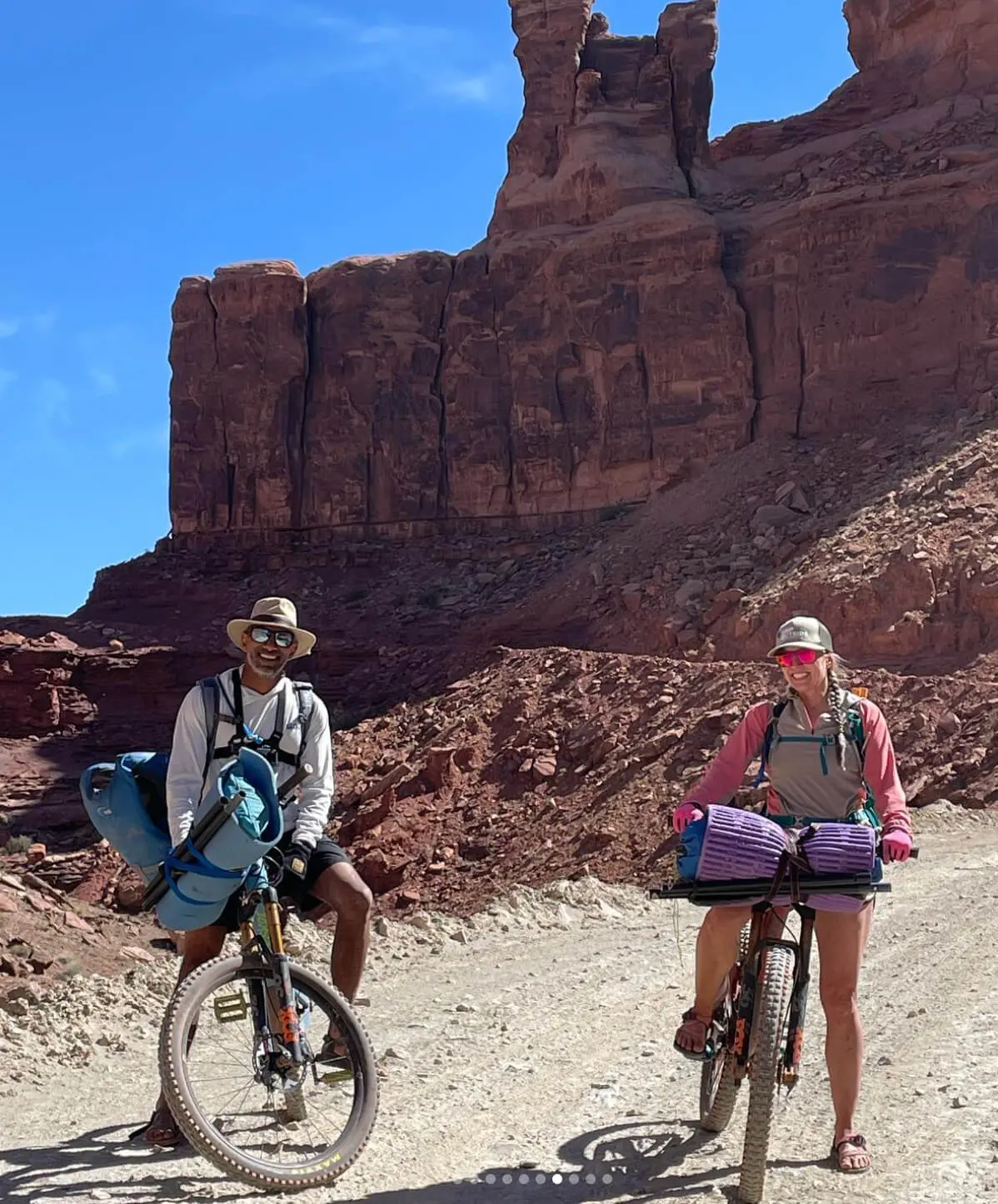Kiteboarding Lingo: Catch the Wind with Confidence
Learning to kiteboard is not just about mastering the skills but also getting fluent in the sport’s unique lingo. Whether you’re gearing up for your first lesson or aiming to chat like a seasoned pro on the beaches of La Ventana, understanding kiteboarding terminology is key to unlocking the full experience. From knowing your “Aspect Ratio” to performing a smooth “Kite Loop,” each term is a piece of the puzzle in the exhilarating world of kiteboarding. For the purpose of this guide, kiteboarding and kitesurfing is used interchangeably.
In this quick guide, we’ll breeze through essential terms that cover everything from equipment and maneuvers to conditions and safety. Learn what it means to be “Overpowered” or how to execute a perfect “Edge” to maintain control. Discover the importance of “Wind Window” knowledge and why “Self-Rescue” skills are crucial. Whether it’s your “Stance” on the board or the thrill of a “Jump,” knowing these terms enhances your understanding and appreciation of the sport.
Kiteboarding is as much about culture as it is about action. By getting familiar with the lingo, you’ll not only boost your confidence on the water but also deepen your connection with the kiteboarding community. Dive into our glossary, embrace the wind, and prepare to share stories of your “Nuking” days and “Zenith” moments back on shore.
It took me a while to understand all of the terms and I wish I would have read these before heading into my kiteboarding lessons.
Happy kiting, and may the wind always be in your favor!
Some helpful resources to go along with the terms:
To understand the wind, check out this video.
To understand the components of a kite, check out this video.
A
- Apparent Wind: The wind experienced by a moving kiteboarder, different from the true wind due to the boarder’s speed.
- Aspect Ratio: The ratio of the kite’s span to its chord, affecting its performance and stability.
B
- Bar: The control device used by the kiteboarder to steer the kite.
- Body Dragging: Sliding through the water without a board, using the kite for propulsion, often used to practice kite control or to retrieve a lost board.
- Booties: Slide-on booties made out of wetsuit-like material with a thick sole to protect your feet as you enter and exit the water to protect against rocks, sharp coral, etc.
C
- Chicken Loop: A loop attached to the control bar that hooks into the harness, allowing the kiteboarder to be connected to the kite.
- Chop: Small, choppy waves, as opposed to flat water or large waves.
- C-Kite: A type of kite with a C-shaped profile, known for its quick turning and high performance.
- Crosswind: Also known as side wind, this is the wind that blows perpendicular to your riding direction. Ideal for kiteboarding, crosswinds offer a perfect balance of power and control as you cut across the water.
D
- Depower: The ability to reduce the kite’s power, usually by adjusting the angle of attack with the control bar or a depower system.
- Downwind: The direction the wind is blowing towards; moving with the wind.
E
- Edge: Tilting the board with your heels or toes to control direction or to resist the pull of the kite.
- EVA: Material used for footpads and straps, providing cushion and grip.
F
- Foil Kite: A kite with air pockets that provide lift, typically used for raceboarding and light wind conditions. Not to be confused with a foil board.
G
- Goofy Foot: Riding with your right foot forward.
- Gust: A sudden increase in wind speed.
H
- Harness: Worn by the rider, the harness attaches to the control bar and takes most of the kite’s pull off the rider’s arms.
- Helmet: Safety first! A helmet is crucial for protecting your head from impacts with your board, the kite, or other objects. Whether you’re a beginner catching your first gusts or a pro nailing high jumps, a helmet is an essential piece of gear.
- Hindenburg: A situation where the kite falls out of the sky due to loss of tension in the lines or wind.
I
- IKO: The International Kiteboarding Organization sets the standard for kiteboarding practices worldwide. IKO certification for schools and instructors ensures high-quality training and safety standards, giving you peace of mind as you learn and progress.
- Impact Vest: A vest designed to protect the rider’s torso from impacts with the water or board.
J
- Jump: Propelling off the water and into the air by manipulating the kite’s power.
K
- Kite Loop: A trick where the kite is steered in a loop, often while the rider is in the air.
- Knots: The units used to measure wind speed.
L
- Launching: The process of getting the kite into the air from the beach or water.
- Leash: A safety line connecting the rider to the kite’s safety system, used to depower the kite in case of emergency.
M
- Microclimate: Local atmospheric zone where the climate differs from the surrounding area, often relevant to specific kiteboarding spots.
N
- Nuking: Extremely strong winds, often too strong for safe kiteboarding.
O
- Offshore Wind: Wind blowing from the land out to the sea. While offering smooth and steady conditions, offshore winds can be tricky for beginners due to the risk of being blown away from shore. Always exercise caution and kite with a buddy.
- Onshore Wind: Wind blowing from the sea towards the land. These conditions can be great for beginners since they push you back towards the shore if you lose control. However, launching and landing your kite can be more challenging due to the wind pushing you onto land.
- Overpowered: Condition where the kite has too much power, making control difficult.
P
- Planing: Skimming over the water’s surface at speed, reducing friction.
- Power Zone: The area of the wind window where the kite generates the most pull.
- Private lesson: A one-on-one kiteboarding lesson. One instructor, one student.
- Pump: Handpump used to inflate the kite.
Q
- Quick Release: A safety mechanism that allows kiteboarders to immediately detach themselves from the kite.
R
- Radios: Used for teaching during lessons
- Relaunch: The process of getting the kite back into the air after a crash.
- Right of Way: Rules determining which rider has priority in the water, important for avoiding collisions.
S
- Self-Rescue: Techniques used by a rider to return to shore using their kite after a breakdown or accident.
- Semi-private lesson: A lesson where 1 instructor teaches 2-3 students together.
- Shackle: A metal hook or clip used to connect the kite lines to the harness.
- Side Shore: Wind blowing parallel to the shore, ideal for kiteboarding.
- Stance: The position of the feet on the board; can be regular (left foot forward) or goofy (right foot forward).
T
- Tack: The direction in which you are riding relative to the wind (e.g., starboard tack, port tack).
- Trim: Adjusting the kite’s angle of attack for optimal performance.
- TripOutside: The website to book your kiteboarding adventures.
- Twintips: Types of kiteboards
U
- Upwind: The direction from which the wind is coming; moving against the wind.
V
- Valve: The part of the kite used to inflate or deflate the leading edge and struts.
W
- Wakestyle: A style of kiteboarding focused on tricks and jumps, similar to wakeboarding.
- Wetsuits: a close-fitting garment of neoprene or similar material typically covering most of the body but not designed to exclude water, worn for warmth in water sports or diving.
- Wind Window: The 180-degree arc in the sky where the kite can fly, relative to the rider.
- Windy.com – website used for checking wind conditions
Z
- Zenith: The highest point directly above the kiteboarder’s head where the kite can be parked for stability.
- Zero to hero: a pricing package used by kiteboarding schools to explain a package of hours that will get a student from being a beginner to being an independent kiter. Each school has different set of hours needed to get to this package, some schools have 9 hours in this package while others may have 12 or 15 hours.
This glossary covers the basics and then some, giving you a solid foundation in kiteboarding terminology. Whether you’re discussing gear, planning your next session, or learning new tricks, knowing this lingo will help you navigate the waters and the community with ease. Keep it handy as you embark on your kiteboarding adventures!





